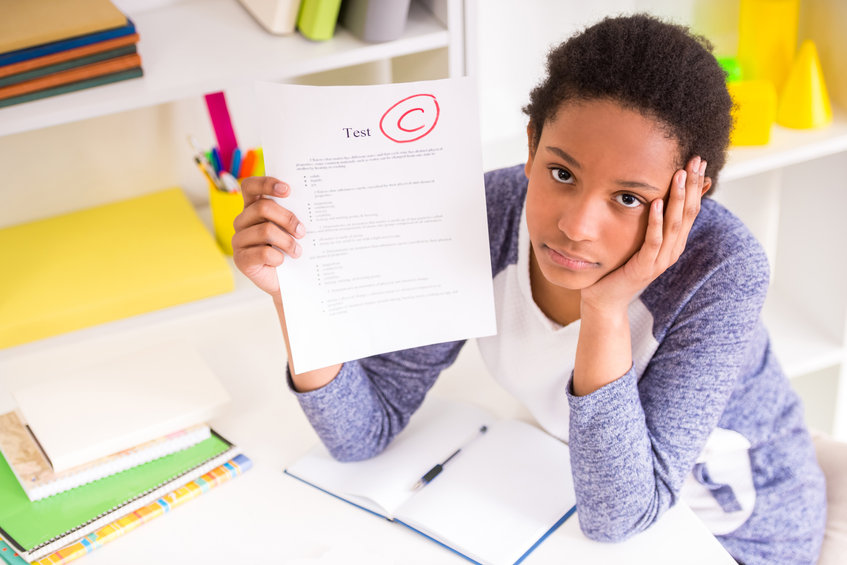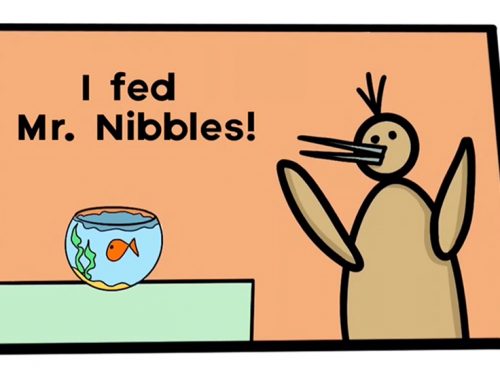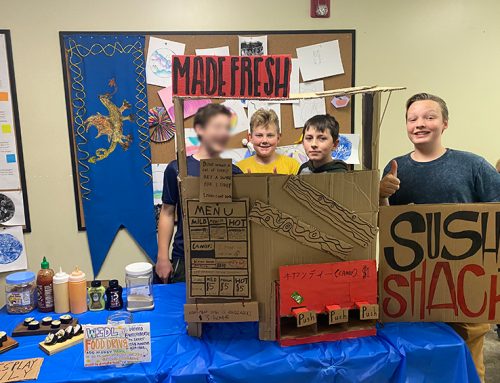The term is over! We’ve seen some of the things students created during the term. Students brought home a lot of projects. There has certainly been a lot of enthusiasm and students had a lot of fun.
But are you wondering exactly what your student learned? What standards were covered? Or how your student “did”? Would some kind of report card give you peace of mind and a helpful perspective on the value of the time and money spent by sending your student to Link Education League? Or in other words, what does an accurate assessment of your child’s learning at Link look like and who is most qualified to do that?
The education world at large is obsessed with assessment. This mostly looks like grades and tests. Besides being inaccurate, grades and tests create many problems of their own. As one educator wrote in the Atlantic “if the purpose of academic grading is to communicate accurate and specific information about learning, letter, or points-based grades, are a woefully blunt and inadequate instrument. Worse, points-based grading undermines learning and creativity, rewards cheating, damages students’ peer relationships and trust in their teachers, encourages students to avoid challenging work, and teaches students to value grades over knowledge.” 1
As vast as the problems with traditional grading and tests are, that is not the topic of this article. And there is innovation happening in this field. Many educators have created and implemented assessments that are more accurate, such as standards-based “grades.”2 Standards-based grading assumes that there are specific pieces of knowledge and skills that all students should know and be able to do by a certain grade level as a result of their schooling.
But we can’t copy or adapt much of what is being done by these innovators because of one major difference. We put the child at the center of their learning instead of an adult-generated set of standards. Scope and Sequence refer to the scope (or breadth) of learning within a subject and the order (sequence) it should be taught in. It started with the Committee of Ten in 1892, a group of ten white guys met to discuss a number of things to recommend to schools across the country as best practices. As part of those recommendations, they expanded and codified a list of things students should know in each subject and when they should learn them. We’ve been adding to that list ever since. Today, we call that Scope and Sequence and it is embedded into the cultural and legal fabric of traditional schools.
What if a culture decided that babies and toddlers needed to accelerate their learning to be more ready for preschool. A committee decided that walking was the first skill to learn based on a survey that showed that the most prepared preschoolers walked before they talked. Babies would then be taught a sequence of skills that support walking. Leg stretching and strengthening, torso stability exercises, balance challenges, etc are all skills systemized and practiced in their Pre-Walking Class. Parents receive report cards with letter grades, or in more innovative schools, standards-based assessments. “Objective 2.3.1 – Meta-tarsal strength: partially proficient.”
Hopefully, this idea is obviously ridiculous to you. In almost all cases, babies don’t need all that to learn how to walk. I personally view much of what happens in the elementary classroom as similarly superfluous. We are all born into this world hard-wired to learn the things that we need to as we are developmentally ready to learn them, such as reading.3 Of course, we want to monitor and even evaluate progress, that is why baby and child well-checks are important. And of course, there are ways to encourage or discourage skill development. A baby that spends a lot of time-strapped in a car seat or stroller will develop gross motor skills at a slower rate than if that baby had lots of tummy time, sitting on the floor, or being carried and thus required to use their core strength to hold themselves up. Providing a rich learning environment is the most important thing you can do for your children at home and it is at the center of what we do at Link Education League. But measuring a student against a set of arbitrary and often developmentally inappropriate standards is unhelpful and in many cases damaging.
How do I know how my child is doing?
So what does the equivalent of a well-check for learning look like when your child is 8? 10? 12? Or how do you know how your kiddo is “doing”? That depends largely on what you personally feel is important to measure.
For example, in my family, I constantly evaluate their love of learning. Is their innate curiosity and drive to learn intact? Or did something happen to over-write that program? After one summer of trying out a fun math app, I noticed one of my children beginning to say she hated math and that math was stupid and pointless. She had internalized the assessment portion of that particular app and it had caused her love of learning in that area to diminish. So we had to fix that and find ways to help her find joy in math again. We also monitor and measure executive functioning and other important skills like the Link Foundational Values (grit, creativity, playfulness, etc). I monitor how reading, writing, spelling, numerical sense, and scientific thinking are developing naturally and watch for any red flags that might indicate needed additional support.
How do we measure?
I look at their “work” samples, observe their process, and talk to them/reflect with them about how it is going.
Measuring reading in a six-year-old:
Work Samples
“Work” looks different for different ages and areas. While monitoring my youngest (6) and her developing literacy, I look at the pictures she draws and have her tell me the stories about them. I look at the signs she makes from mostly copying words she sees.
Observe their process
This child has been able to decode (or sound out) small words and sounds for a while now. She has even said she wants to learn to read but has not demonstrated sustained attention at practicing the skill of reading. She doesn’t bring me a beginning reader book on her own. However, she does ask me how to spell things all the time for the signs, pictures, and recently booklet stories she likes to create. She is motivated if she gets to create with words.
Reflection
Talking to them about what they are thinking and learning about is essential because learning is largely internal. There is a lot that happens on the inside that can’t be seen. Talking about learning is also a skill, however. It develops both with age and with practice.
For my youngest, I simply ask her about the words she is writing and the stories behind the pictures she is writing. From that, I’ve learned she has nicknames for different letters to help her remember their shape. That indicates to me she is still working on letter recognition, that for whatever reason, is taking longer for that information to make its way into the part of her brain where she can recall it quick enough for reading to be easier. I use that information to know that developmentally she isn’t quite ready for the next step.
Measuring a 9-year-old’s executive functioning:
Work Samples
“Work” in this case looks like tasks he knew he was supposed to complete. We were particularly working on self-monitoring of tasks and task initiation. It might be one instance of “clean up the legos” or “morning routine.” Work samples include how it went but also what tools he used to help him.
Observe their process
Through observation, I discovered this child gets distracted when moving between rooms. He also gets overwhelmed easily if we don’t somehow make the task more concrete or break it down into smaller steps. He also works better if he is given a short time limit and gets more breaks.
Reflection
I ask this child what he feels and notices about tasks he is asked to do. We talk about when he was able to remember things and why. We try to identify strategies that work in other areas to see if that strategy will transfer to the current goal.
Measuring an 11-year-old’s grit:
Work Samples
I look at projects and learning activities the child has completed or not finished. These could be projects from Link Education League (shield, sword, costume, stained glass, illuminated letter, etc). This could also be reading a difficult book, writing a story, building a lego set, or cleaning a bathroom.
Observe their process
Through observation, I learned that this child is hesitant to start something she doesn’t already think she can do well on. Confidence is key for her. In the absence of confidence, she needs more support. She often assumes she can do well on something new and is very frustrated when that is not the case. This child is more willing to persevere if she can listen to music she likes, an audiobook, or if she can work on it with friends. She also prefers projects that can put her own individual stamp on.
Reflection
On some work samples, it is easy to see from the final result that something went awry. Through reflection, you can discover if the student ran out of time, struggled with the materials or instructions, wasn’t that interested, or gave up. Instead of seeing a messy or incomplete project as a failure, you can ask questions to better understand the circumstances and make visible the learning. For example, this child got really frustrated that her embroidery thread kept slipping out of the needle, which is why she eventually gave up. Or maybe the student felt rushed or didn’t understand the instructions. You can help the student troubleshoot what to do next time.
Who is most qualified to assess your student?
You, in teamwork with your student, are the most qualified person to evaluate your student! even if you are totally new to this language of reflection, or haven’t been in the habit of observing your students’ process, or interpreting their work samples (or maybe you’ve been tossing them as soon as you can). Sit down and decide what is important to you to measure. It will probably be different for each kid. Then go through the process that I just demonstrated above. I didn’t realize how much I knew about my kids in these areas until I sat down to type this! That is the power of reflection!
And what about our teachers at Link? Of course, they can give you additional insights. They are happy to give their observations from the short amount of time they have with them. Feel free to reach out to them and talk over email or phone, or have an informal “parent-teacher conference” with them. Also, know that we are also making an effort to teach them reflection skills in class. But reflection skills are taught better one on one or in smaller groups than in our large classes. At the bottom of this article, I’ve included a page with prompts that can help you learn about how to reflect and help your children reflect as well.
You can do this!!
1 https://www.theatlantic.com/education/archive/2014/03/letter-grades-deserve-an-f/284372/
2 https://catlintucker.com/2017/05/3-probs-trad-grades/
3 https://blog.sonlight.com/teach-reading-early.html





